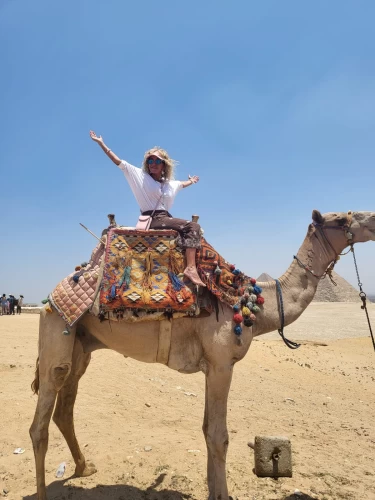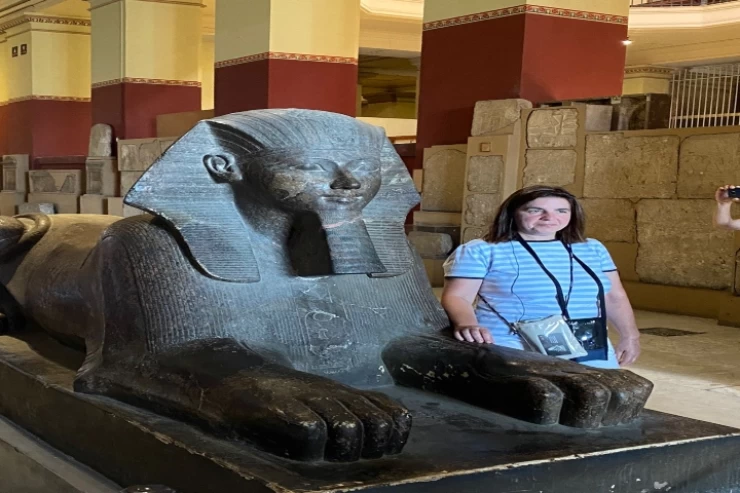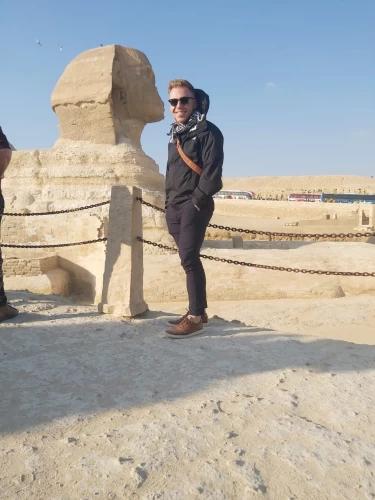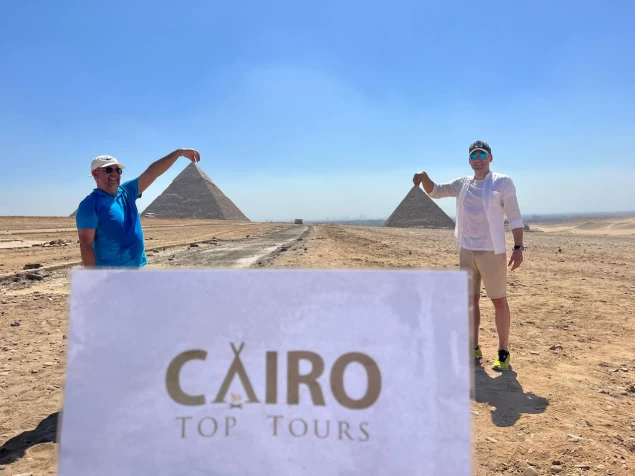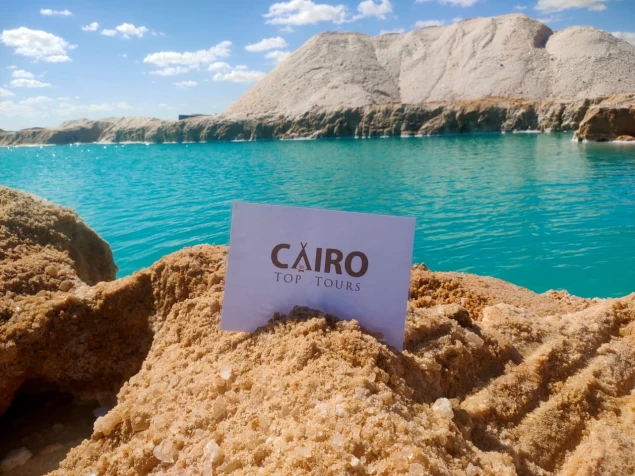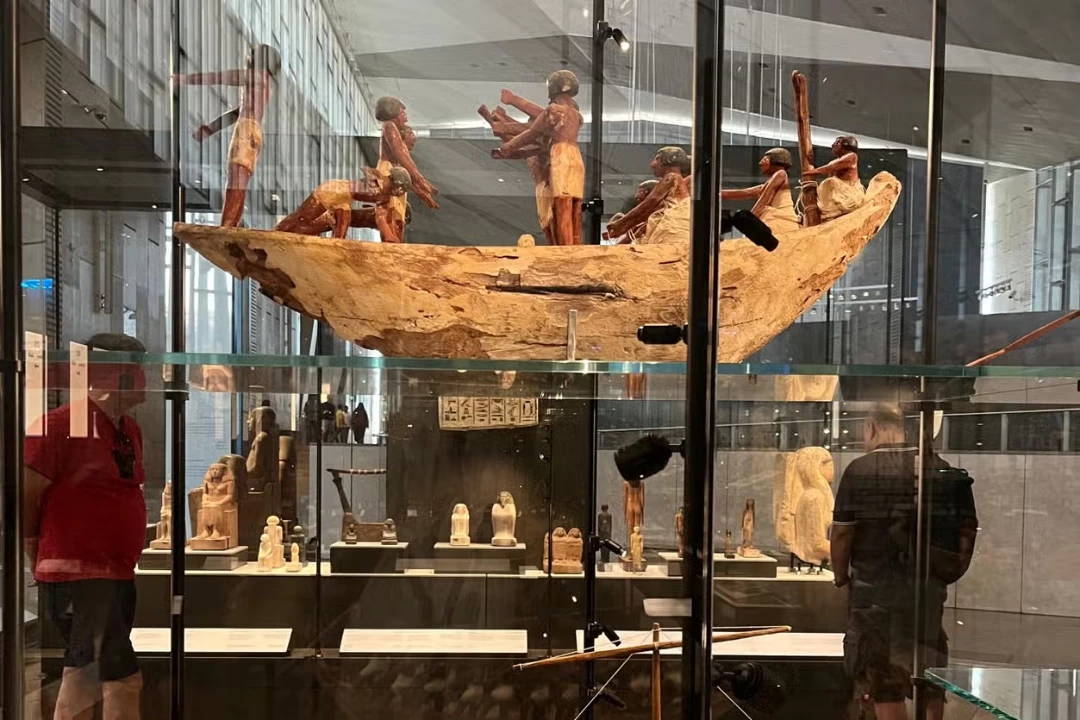
The Grand Egyptian Museum
The Grand Egyptian Museum (abbreviated GEM) is located a few miles west of Cairo near the pyramids of Giza. It is being built to be the world's largest museum of Antiquities, accommodating 5 million visitors a year. Egypt has launched a campaign to finance the project, the most prominent contributor of which was the Japanese agency JICA, with soft loans.
Regulating legislation
Law No. 9 of 2020: regarding the reorganization of the Grand Egyptian Museum, which stipulates that the museum is a public economic body with a legal personality, based in Giza governorate and reporting to the Minister of Antiquities Affairs. Presidential Decree No. 180 of 2021: to form the board of Trustees of the Grand Egyptian Museum under the chairmanship of the president of the Republic. Museum devices The board of trustees: chaired by the president of the Republic and with a membership of no more than twenty personalities. The board is competent to approve the general policy and plans necessary for the museum authority. it may take whatever decisions it deems necessary in this regard to enable the museum authority to perform its mission and carry out its work. it is also competent to support and follow up on its activity and provide what guidance it deems in this regard. The composition of the board of Trustees, the term of its membership, and the organization of its work are issued by a decision of the president of the Republic. The board of Directors: chaired by the minister concerned with antiquities Affairs and with a membership of several personalities not less than ten and not more than twenty members of scientific standing and international experience, the chief executive of the museum shall be among them, provided that at least half of them are from outside the museum authority. The formation of the board of directors, the determination of the term of its membership, the organization of its work, and the determination of the financial transactions of its chairman and members shall be issued by a decision of the prime minister. The board of Directors is the dominant supreme authority over the affairs of the museum authority, and may issue the necessary decisions to achieve its objectives, in particular the following: Supervising the implementation of the general policies and strategic plans of the Museum Authority approved by the board of trustees. Approval of the organizational structure of the museum body. Approval of the draft annual budget of the museum authority and approval of the draft final account. Acceptance of grants, donations, bequests, and gifts that fulfill the purposes of the museum authority. Managing the museum authority's financial resources. Laying the foundations for cooperation between the museum authority, museums, Egyptian, regional, and international institutions, and companies. Approval of the draft internal regulations of the museum authority. Approval of loans held in favor of the museum body. Executive chairman: the museum has an executive chairman and two vice-presidents, whose appointment, determination of their competencies, and the financial transaction prescribed for them shall be issued by a decision of the prime minister, based on the nomination and presentation of the minister concerned with Antiquities Affairs. The appointment of the Chief Executive Officer and his deputies is for a renewable three-year term. The chief executive represents the museum authority before the judiciary and in its relations with others. Location and implementing companies. The site for the establishment of the museum was chosen near the pyramids of Giza, to be erected on an area of 117 acres.
Design
Due to the fact that the museum is located in front of the Giza Pyramids, the facade was designed in the form of triangles that are divided into smaller triangles in a symbolic framework of the pyramids, according to a mathematical theory of a Polish scientist talking about the infinite division of the triangle shape.
Buildings
A conference center, a research center, restoration Laboratories, a three-dimensional cinema, and places dedicated to serving visitors such as restaurants, a clone, and gift shops, and parking lots.
Restoration Center
It is located in an area of 32 thousand square meters, it is located almost 10 meters below ground level, and a tunnel has been created between the restoration center and the museum through which the relics are safely transported, with a length of almost 300 meters. The restoration center includes 19 laboratories where various types of monuments are restored and returned to their natural form, including:
Porcelain, glass, and metal laboratory: for the restoration of pots and figurines made of inorganic materials.
Stone Lab: for the large stone artifacts of the restoration process.
Microbiological laboratory: to identify the types of organisms that cause damage to the impact, which facilitates the preparation of chemicals necessary to stop the growth of these organisms.
Scanning electron microscope laboratory: for processing samples and chemical components before sending them to the microbiological laboratory.
The great staircase
The great staircase or the main lobby is the first feature for museum visitors. The staircase will include the statue of King Ramses II, the statues of King Senusret displayed in the garden of the Liberation Museum, the head of Bismatik I, and other statues.
Guidelines
All instructions will be placed in the museum in three languages-Arabic, English, and hieroglyphs.
Shops and restaurants
It is planned to establish 20 shops and 8 restaurants in the investment area within the museum campus, in addition to a 30-room hotel located away from the covered part of the museum and from the monuments.
Cost and financing
The most prominent of which were two concessional loans from the Japanese JICA agency, the first in 2006 worth 280 million dollars and the second in 2016 worth 460 million dollars, in addition to 150 million dollars from local and international donations and contributions, and 100 million dollars in self-financing from the Egyptian government.
Stages of creation
The first stage
It is a stage that includes designs, technical, engineering, and construction drawings, and determining the exact cost of the project.
The foundation stone of the project was laid by President Mohamed Hosni Mubarak on February 4, 2002, in the presence of a gathering of specialists.
At an international press conference, the international architectural competition for the design of the Grand Egyptian Museum was announced to be the largest museum of Egyptian antiquities in the world, next to the pyramids plateau in Giza. The open international architectural competition was organized under the auspices of UNESCO. Architects and consultants from 83 countries submitted architectural concepts and projects totaling 1557 projects. In July 2003, the architectural competition prizes were distributed to the first winners, and the total prizes reached 750 thousand dollars. The winning design involved 14 consulting offices from five different countries. The study of the project took 3 years for two million dollars; it was written in 8 volumes. The first stage is the pre-primary design stage, during the period from November 23, 2003, to May 23, 2004, and included engineering and technical studies to prepare and research all the elements and components necessary for the preparation of primary design in all engineering disciplines.
The second stage:
It is the stage that lasted during the period from August 15, 2004, to June 30, 2005, and included the preparation of engineering drawings for the final primary stage in all engineering disciplines. During that period, construction and construction work began during that stage in May 2005. The third stage: the detailed design stage, which lasted during the period from April 15, 2006, to April 26, 2007, and included a detailed study of all items and details of the museum and holding the required quality tests on materials and design, in addition to the systems expected to be applied. The fourth stage: it is the stage that lasted during the period from August 15, 2007, to September 15, 2008, during which the design team completed the preparation of an integrated design that combines all disciplines.
The second stage
Construction work began in May 2005 in parallel with the completion of the first phase, which included design work. The second phase included the construction of the archaeological restoration center, two power stations, a fire station, a security building, and archaeological stores. This phase cost about 240 million pounds, equivalent to 43 million dollars, and was fully funded by the Antiquities Fund of the Supreme Council of Antiquities. The electric power plant contained central air conditioning and environmental control machines to supply the restoration center building with energy, and it is also used as a replacement station for the main museum building in case of emergency. As for the fire-fighting center, it has been equipped with fire-fighting devices managed by the Civil Defense Department to serve the museum as well as the surrounding area of the museum.
The first stage:
The rehabilitation of the site took 6 months, during which the site was cleared of all occupancies, waste was removed, fences were built to define the property with a length of about 3 km and internal roads were paved to facilitate the management of the site during the various stages of implementation, with the allocation of a safe location for the transfer of the statue of Ramses, Gates were made, security systems and lighting of the entire site and advertising banners about the project. The second phase started in July 2006, when the executing company was contracted to build and construct the restoration center, Energy Center, and Fire Station, and the construction was completed within 21 months.
The third stage
Included equipping the restoration center with the necessary machinery and equipment to begin the restoration and processing of artifacts for display at the museum, to prepare and process one hundred thousand artifacts intended for display in the museum galleries.
Opening of the second stage.
On June 14, 2010, Mrs. Suzanne Mubarak inaugurated the second phase of the project. the opening was witnessed by Farouk Hosni, Minister of culture, engineer Ahmed Maghrabi, Minister of Housing, Dr. Osman Mohamed Osman, Minister of Economic Development, Dr. Ahmed Zaki Badr, Minister of Education, Engineer Sayed Abdel Aziz, governor of Giza, Dr. Zahi Hawas, secretary general of the Supreme Council of antiquities, and Dr. Shadia qanawy, chairman of the Supervisory Committee for the implementation of the museum project.
The third stage.
The building includes museum galleries, a museum of scholars, a conference and Cinema Center, an Archaeological Library, and a children's Museum. This is the stage at which work is currently underway, as the first stage will be opened in May 2018 with the presentation of Tutankhamun's belongings.
The stage that included construction and construction work included general excavation, leveling, and removal of sand from the site in preparation for the construction of the main building of the museum. The works were completed in February 2009. The site leveling work required continuous work 24 hours a day, seven days a week. during that period, 2.25 million cubic meters of sand were removed outside the project site to make the required space available.
The second stage
The construction of the main building on a total area of 108 thousand square meters, and that stage began in 2012, and included the construction of museum buildings and museum galleries, the Museum of scholars and scientists, the meeting Center, Theater, three-dimensional cinema, Archaeological Library, Children's Museum, Museum with special needs, Multimedia Center, cultural and educational center, traditional crafts and Arts Center, entertainment and investment zone, Museum Park, recreational parks and cultural tourist route to connect the museum to the Pyramid Plateau.
Transfer of the statue of Ramses II
The statue of Ramses II was moved in 2006 from its old location in Ramses Square in Cairo to be placed in its new location at the entrance of the Grand Egyptian Museum, and its weight reaches 83 tons. In 2018, the statue was moved from its temporary location to the main lobby of the museum.
Transfer of the Luxor monuments
Using special means of protection and packaging, according to international rules. The artifacts date back to different eras of the ancient Egyptian civilization, although most of them date back to the new kingdom, including a large statue of King Amenhotep III and the god Horus from pink granite weighing about 4 tons, which will be displayed on the great staircase of the museum in addition to several pottery pieces and a collection of coffins.
Transfer of the second Cheops complex
The museum received at various intervals the wooden pieces of the Cheops II ship, in order to complete their restoration and display them at the museum.
Logo design
On June 10, 2018, the logo of the museum "logo" was unveiled, which will be used in the promotional campaign of the museum in Egypt and the world. The logo was designed by the Lebanese-Dutch Tarek atresi, and the cost of the design amounted to 800 thousand Egyptian pounds, which is among the costs of designing the museum display implemented by the German company "Atelier Bruckner", and the design was selected by an Egyptian Committee.
The design of the logo sparked a wide controversy among experts and intellectuals, as some objected to the simplicity of the logo and its colors, including the artist and former minister of culture Farouk Hosni, the artist Mohammed Abla and others. The other side saw that the use of a simple geometric shape for the logo was similar to the logos of major museums in the world.
The Grand Egyptian Museum
It will be one of the most unique museums and it will include a large collection of artifacts dedicated to a single civilization. The museum includes the tomb of Tutankhamun and ten thousand unique archeological pieces, It is designed to be the center of education and culture to explore Egyptian history and civilization. The tour of exploring the Grand Egyptian Museum has become one of the Top Egypt Tours for the whole family and fans of the Egyptian civilization.
The Grand Museum is designed to be close to the Giza plateau and to be directly connected to the Giza pyramids: pyramids of Khufu, Khafre, Menkaure, the Great Sphinx, and the Valley temple. The design of the Museum is made on 90,000 square meters, leading it to be the world’s largest museum. The museum was built to encompass more than 100,000 pieces of pharaonic artifacts; It also includes parts designed to be exhibitions, conference centers, a Museum for Children, and gardens to let the whole family spend an enjoyable time during one of Egypt Easter Tours to refresh your soul.
In 2002 Egypt announced an international design competition and sought for the laid of the foundation stone. After that in 2003, the firm Heneghan Peng Architects won the competition and signed a contract with Egypt for the designation of the museum and the finishing of the details of the design ended and started to offer the first private tours in 2022. The façade of the museum takes a triangle shape, then you will pass through an entrance decorated with alabaster and hieroglyphs, and finally, you will meet the Grand statue of King Ramses II greetings you. It’s a must-tour to be taken when you have the opportunity to explore the museum during one Cairo Half-day tour with your family and partners.
The transferring process was by Ministry for Tourism and Antiques started to transfer some of the archeological pieces from the Egyptian Museum in Tahrir to the Grand Egyptian Museum in late 2010. The most special transferred pieces were Tutankhamun’s funerary Mask, the mummy, the inner gold sarcophagus, and his jewels. Other moved artifacts were the block statue of Queen Hetepheres, the Queen Nefertarti granite sculpture, the King Snusret I statue, and The solar boat of King Khufu.
The Museum offers an exponential immersive show focusing on the Egyptian civilization in very interesting show. The show is using the digital art to narrate the life of the legendary King Tutankhamun, displaying the temples, and treasures and revealing the secrets of the Egyptian civilization enhanced with sound making it an exceptional experience. The show received many rewards and was widely spreading among visitors from Egypt and all over the world. The museum is now offering new experiences through the tours included in Egypt Classic packages for children to learn more about the history and the iconic temples in Egypt within a guided tour after passing by the Gift shop of the Museum.







